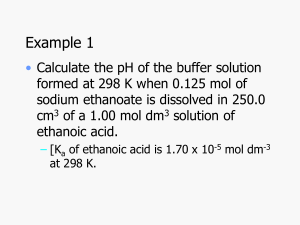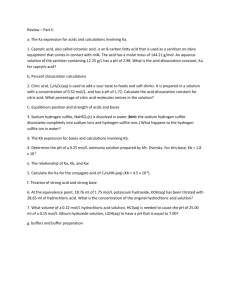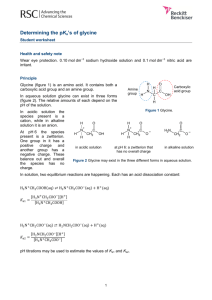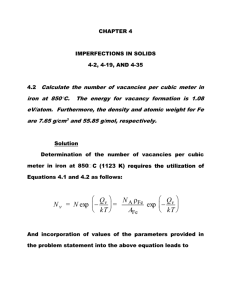pH calculations - Activity - Lesson element
advertisement
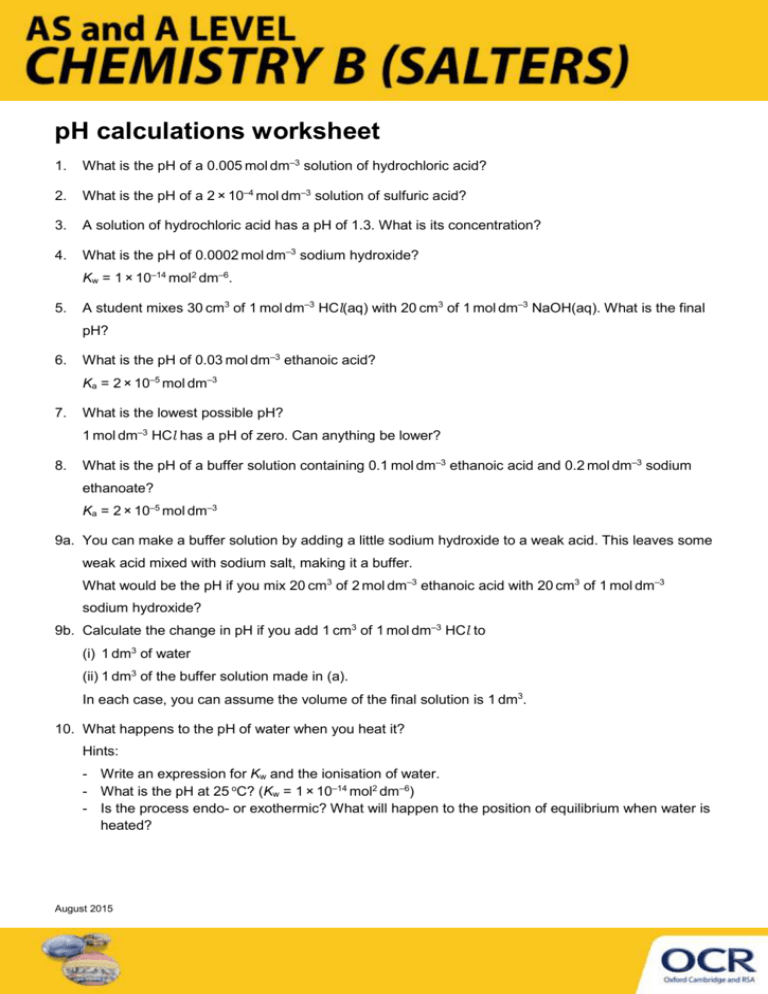
pH calculations worksheet 1. What is the pH of a 0.005 mol dm–3 solution of hydrochloric acid? 2. What is the pH of a 2 × 10–4 mol dm–3 solution of sulfuric acid? 3. A solution of hydrochloric acid has a pH of 1.3. What is its concentration? 4. What is the pH of 0.0002 mol dm–3 sodium hydroxide? Kw = 1 × 10–14 mol2 dm–6. 5. A student mixes 30 cm3 of 1 mol dm–3 HCl(aq) with 20 cm3 of 1 mol dm–3 NaOH(aq). What is the final pH? 6. What is the pH of 0.03 mol dm–3 ethanoic acid? Ka = 2 × 10–5 mol dm–3 7. What is the lowest possible pH? 1 mol dm–3 HCl has a pH of zero. Can anything be lower? 8. What is the pH of a buffer solution containing 0.1 mol dm–3 ethanoic acid and 0.2 mol dm–3 sodium ethanoate? Ka = 2 × 10–5 mol dm–3 9a. You can make a buffer solution by adding a little sodium hydroxide to a weak acid. This leaves some weak acid mixed with sodium salt, making it a buffer. What would be the pH if you mix 20 cm3 of 2 mol dm–3 ethanoic acid with 20 cm3 of 1 mol dm–3 sodium hydroxide? 9b. Calculate the change in pH if you add 1 cm3 of 1 mol dm–3 HCl to (i) 1 dm3 of water (ii) 1 dm3 of the buffer solution made in (a). In each case, you can assume the volume of the final solution is 1 dm3. 10. What happens to the pH of water when you heat it? Hints: - Write an expression for Kw and the ionisation of water. - What is the pH at 25 oC? (Kw = 1 × 10–14 mol2 dm–6) - Is the process endo- or exothermic? What will happen to the position of equilibrium when water is heated? August 2015
